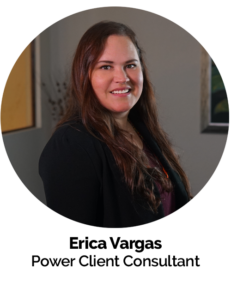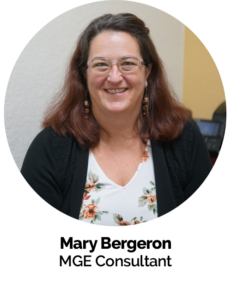In June and July 2020, most dental practices were “slammed” with the wave of patients returning after the COVID shutdown. But beginning in late August, many are now hearing crickets.
What happened? Well, a combo of three things:
- Extra busy offices had little or no time for “outreach,” to chase up on overdue patients or patients that may have “fallen between the cracks.”
- Depending on when you shut down, your recall schedule was completely canceled about 6 months ago, which is now showing up 6 months later and
- You may have lost up to 30% of your potential appointments due to patients that are scared to come back in right now.
Add all these up and you have a recipe for a slowdown!
So, what should you be doing?
Well beyond any usual actions, a heavy focus should be placed on:
- Reactivating overdue or inactive patients, and
- Marketing like crazy to increase new patient flow
And while many doctors focus on “2” above, (new patients, new patients, new patients), “1” is often ignored or given little attention. But, it’s cheaper than advertising as you already know these people! You’ve already paid to acquire their business! Not that you shouldn’t market… but if you placed as much effort into reactivation, you’d really be building for the future.
Getting your team to make positive (and consistent) reactivation efforts is tough sometimes. Between a lack of knowledge and just being busy, it often just isn’t done!
With that in mind, we brought together our Senior Power Client Manager, Chris Menkhaus, and Power Client Managers, Mary Bergeron, Medina Begalieva, and Erica Vargas to discuss this subject and answer questions we’ve received about patient reactivation. We hope you enjoy it!
For a complete step-by-step program that your team can use to reactivate patients, see DDS Success, our on-demand video training platform. We’re offering a free 7-day trial if you’d like to check it out.
And with that, let’s dive in!
Q: How should we reach out to patients that are overdue or haven’t been in for years?
 Chris: Phone calls are always #1. Simply getting on the phones and calling each person on the reactivation list is always the most effective way to get them scheduled.
Chris: Phone calls are always #1. Simply getting on the phones and calling each person on the reactivation list is always the most effective way to get them scheduled.
Text messages are the second most effective method.
And then email and direct mail both work, as well.
Ultimately, you should be doing all four of these as a coordinated campaign. Some people won’t answer the phone but will see your card in the mail. Others don’t want to receive texts but will open an email. So do them all and it’ll increase your likelihood of reaching everyone.
Q: When we call overdue patients, it usually goes to voicemail and they never call back. Any tips?
Mary: This is the most common barrier to reactivation: patients aren’t answering the phone or they’re not responding to messages. You’re calling people on the reactivation list over and over and not hearing back.
What this all comes down to is: what are you asking for?
Because you need to ask for somebody to call you back. You’re not trying to schedule them with a voicemail. You just want to get them on the phone with you.
If you call and leave a normal message of, “Hi, it’s Mary with the dental office and it’s been 17 months since your last appointment… etc.” They’ve already deleted the voicemail; they’ve decided not to come in.
So, when we work with clients on this, we are able to get a really good response by leaving a message that is designed to get someone to call you.
So, something like, “Hi, it’s Mary. Dr. Jones asked me to give you a call. He needs to talk to you, so please call back to make an appointment so he can go over what he wants to talk to you about.”
They’ll call back and say, “What does the doctor need to talk to me about?”
And once you have them on the phone, you can work with them to get them scheduled for an appointment, but the most important thing is getting a response.
Chris: I like this because it’s also true: the doctor does want to talk to them. So, you have every right to mention that in the voicemail.
Erica: Plus, you’re being real with the patient.
I’ve seen a lot of instances where a staff member calls a patient who hasn’t been in for a while and they’ll leave a robotic message on the phone. It’s the same monotonous script for every call.
That doesn’t inspire someone to call you back.
They should be looking at the patient’s chart or notes ahead of time. They may see that the office reached out 6 times in the last month, and the patient still hasn’t responded.
Being direct about it and saying, “Hey Mr. Jones, we’ve tried to get in contact with you about 6 times now. We’re kind of concerned. Please call us back and let us know what’s going on.”
That’s another way to elicit a response.
The other point I’d like to make is that the volume of calls is important. You want to make sure you’re actually casting a wider range of patients and making sure you’re reaching out to the entire patient base who needs to be reactivated.
Q: How often should we reach out to overdue/inactive patients?
 Medina: We always recommend that you should make a specific person responsible for reactivation, even if they only do it for an hour a day. And you should be doing reactivation continually.
Medina: We always recommend that you should make a specific person responsible for reactivation, even if they only do it for an hour a day. And you should be doing reactivation continually.
You may have multiple team members contribute, but one person should ultimately be responsible for making sure it happens on a regular basis.
My other tip would be to not have a preconceived idea about the patient if they haven’t been to your practice for 5 or 10 years. You’ll be surprised that some patients still think that you are their provider – they just forgot how many years went by.
And if a patient has moved or they did find a different provider, then say something like, “okay, no problem. What’s the address of your new provider so I can send your records?” You want to maintain a good relationship with your patients because you never know – they may still have friends in your area and refer them to you if they need a dentist.
Erica: Yes, a lot of patients don’t realize how long it has been. Most of the time if the patient isn’t responding, it’s not that they’re seeing a different provider. They probably just aren’t seeing a dentist in general. So, it’s an additional responsibility for us to make sure we’re reaching every patient.
Chris: You guys have hit a lot of great points, and I want to put emphasis on the frequency of which you contact people.
We hear from most businesses regularly, sometimes with multiple contact points in any given day or week. I’m not suggesting you call this frequently, but you can see most dental practices are way behind those numbers.
I don’t know about you, but if I get a call from an unknown number, I don’t answer it and I don’t call them back.
But when someone calls me once every few days, or once a week, I’m at least searching the number to find out who is trying to reach me. Keep in mind, there’s a fine line between ineffective, effective, and annoying! Calling every day = annoying. Once a week might be fine – once every two months is too infrequent. It’s a common-sense thing. Transpose it onto yourself. In other words, if someone called you (and you didn’t call back), and then texted you a couple of days later, (with no call back) and then called again in a few days, that wouldn’t be all that bad would it? Obviously, they want to get a hold of you! Now, what if they called you three times a day? Yes… annoying. Apply this same concept with your mail and email. Figure out what works best and run it as a coordinated campaign. The keys are: consistency and regularity until scheduled! And then of course, making sure when the patient calls back that they don’t end up inactive again! That’s a customer service and scheduling issue!
You should be seeing results right away, but remember that this is a marathon and an ongoing thing that you should be doing for the rest of your career. So, if you call someone once a month, maybe you’ll see a response in a year. But if you do it fairly regularly, then we start to see some real potential start to happen.
And keep in mind that you really do care about the patient. When you’re concerned about them, communicate that. If you’re wondering how their experience was from their last visit a year ago, ask them and listen to their response.
Part of reactivation is clearing that part up because there’s a reason they didn’t come back. Maybe it was a sub-par experience at your office. Maybe they’re nervous about possible treatment. Or it could be something else entirely and it’s important to find that out.
Q: Who should be in charge of reactivation?
Erica: Typically this would be the Scheduling Coordinator. As Medina said, one person should be in charge of it, and then you can regularly check in with them to make sure they’re keeping up with it.
 Reactivation can become very repetitive and if you’re not staying fresh every time, it can become very monotonous. So, to help your scheduler out pick their brain and find out if there’s anything they’re running into. Roleplay with them and act out scenarios so they start to feel rejuvenated and more competent on how they’d handle different situations.
Reactivation can become very repetitive and if you’re not staying fresh every time, it can become very monotonous. So, to help your scheduler out pick their brain and find out if there’s anything they’re running into. Roleplay with them and act out scenarios so they start to feel rejuvenated and more competent on how they’d handle different situations.
On DDS Success, we have videos demonstrating the phone calls and how to overcome barriers they may run into. Start your free trial and check out the Recall & Reactivation section of the Scheduling Coordinator Training Course.
Chris: Yes, this is a great idea because some people may not be happy that you called and it’s important to know how to handle a situation like that so you don’t feel caught out of left field.
The person who does reactivation has to have thick skin, so let’s help them out by sharing the positives that came from those they reactivated. By simply saying, “Hey, remember that guy Joe you reactivated last week? He had severe perio and guess what? He just finished his treatment today and he LOVES us and now he’s bringing his family, and that’s because of you.”
Medina: That’s a great tip, and when you run into patients who aren’t necessarily happy about it and say something like, “You’ve called me four times and I told the previous person I’m not coming in. When are you going to stop calling me?!”
You could say, “I understand how you feel, but I need to make sure that you are healthy and you are due for a cleaning. So whether you come to our practice or go somewhere else, it’s very important to us that you’re getting your oral health taken care of. This is what we do – we take care of our patients and get them healthy.”
Erica: Another great successful action we’ve done in the past is that any time a patient calls me back we effusively acknowledge them for doing so. Something like, “Thank you SO much for calling me back! We were actually getting a little concerned, so I’m really glad to hear from you.”
Always acknowledge them for calling back because they didn’t have to – they could’ve gone another six months without calling you back.
Q: What would a good reactivation phone call sound like? Can you give examples of what to say?
Chris: Sure! I’ll give a little roleplay of a typical reactivation phone call, including some common objections that come up from the patient.
Reactivation Phone Call
*ring ring*
Patient: Hello?
Scheduler: Hi! Is this Susan?
Patient: Yes it is.
Scheduler: Hi, this is Erica with ABC Dental. How are you today?
Patient: Yeah, I’m fine. Can this be fast? I’m really busy.
Scheduler: Oh okay. No problem! Are you at home now with the pandemic going on or are you back at work?
Patient: Yes, I’m at home still. And you know, the kids are doing school from home, so I need to help them with that.
Scheduler: Totally makes sense. Do you have any help with the kids?
Patient: Yes, my mom helps sometimes. But I don’t want to take time to do another thing really.
Scheduler: I see, makes sense. Well, I’ll tell you what. First things first, we can definitely get you in and out quickly. We have our system worked out really well to the point we could get you in and out within an hour. Do you think your mom would be willing to help take care of the kids while we can make sure your oral health is taken care of?
Patient: Um, sure, yeah I think she’ll do that.
Scheduler: Great! Let’s get you in. I have availability at 3:00pm tomorrow. Does that sound good?
Patient: Oh, ummm, yeah I guess that will work. I’ll have to let my mom know.
Scheduler: Okay, great! I’ve got you scheduled for 3:00pm tomorrow. We’ll see you then.
Alright, those are our tips on reactivation. We hope you enjoyed it! If you have any questions, please don’t hesitate to contact us at (800) 640-1140 or by email at info@mgeonline.com.







No Comments
Be the first to start a conversation